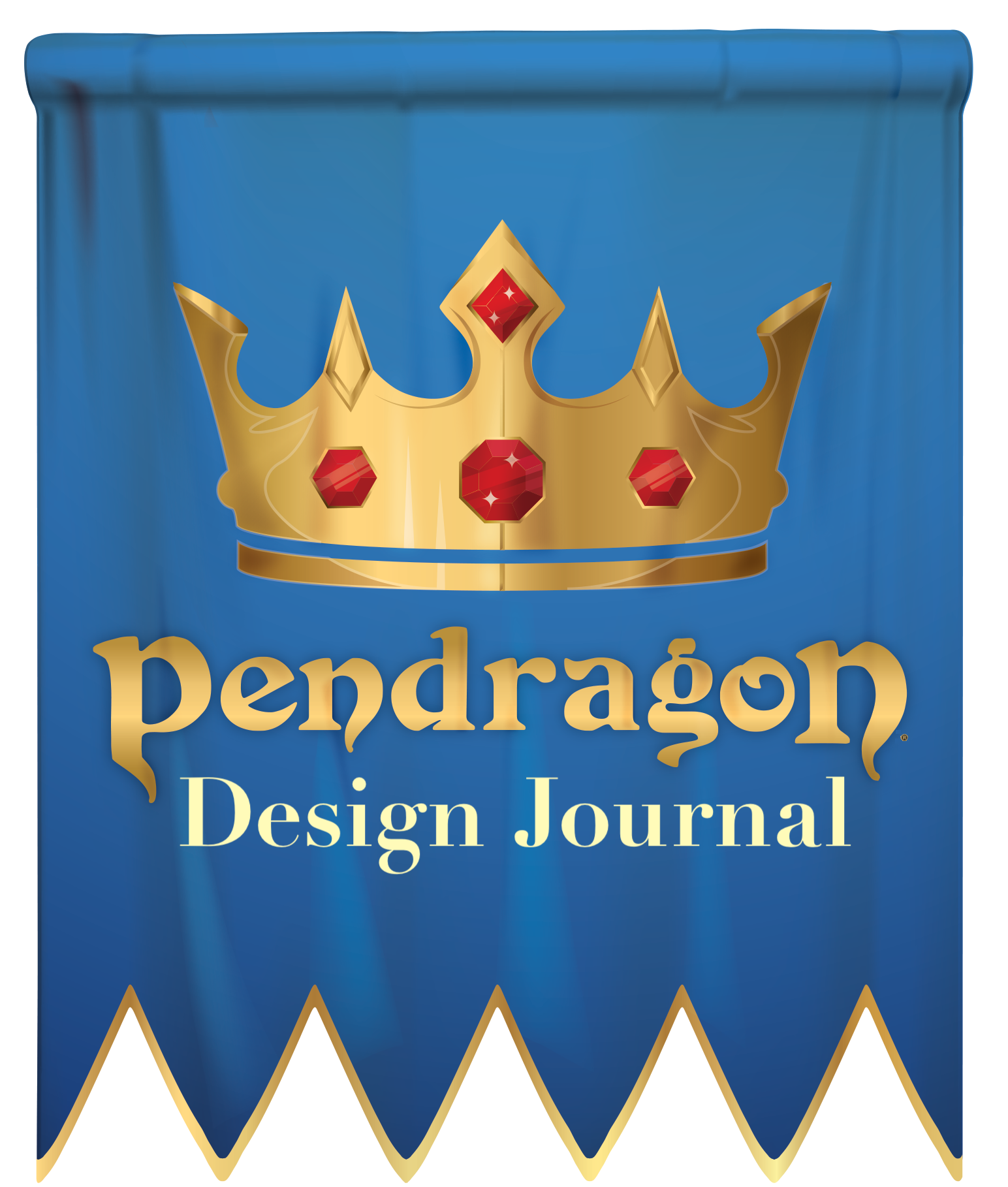Pendragon Design Journal #10: Arthurian Acts
Posted by Michael O'Brien on 29th May 2022

By David Larkins, Pendragon line editor.
A new edition of the Pendragon RPG is coming! The intention of this series of design journals by Pendragon line editor David Larkins is to trace the path of development, starting in the early 1980s and culminating with the forthcoming new edition of the Pendragon RPG, which will be first to be wholly published by Chaosium in a quarter-century.
- Pendragon Design Journal #1: Where It All Began
- Pendragon Design Journal #2: Bringing the Light
- Pendragon Design Journal #3: A Modular Approach
- Pendragon Design Journal #4: Refining Traits and Passions
- Pendragon Design Journal #5: Honor and Glory
- Pendragon Design Journal #6: Combat!
- Pendragon Design Journal #7: The Social Game
- Pendragon Design Journal #8: The Battle System
- Pendragon Design Journal #9: Of Horses and Squires

The Pendragon RPG is, at its core, a game of knights, and as such we have taken a look at the game from a personal, knightly level in past Design Journals. For this entry, we’re going to pay a visit to the Gamemaster’s Guide and zoom out a bit to discuss what we like to call “Arthurian acts.”
Arthurian acts are the elements that most often come up in tales of King Arthur and his knights. They represent an idealized view of knighthood and the world they operate in, and in many ways are what elevate the stories—and Pendragon by extension—beyond a more grounded take on medieval history and into the realm of legend.
We’re talking about things like tournaments, feasts, epic hunts; seduction and fine amor, the niceties of court politics and what happens when a cruel and arbitrary lord violates these. “Genre tropes,” as one might say.
For example, one thing I often find myself explaining to folks new to Pendragon is that, unlike in most other RPGs, having your character captured by an enemy is usually the more interesting choice. Many seasoned gamers balk at captivity, and rightfully so, for in most RPGs captivity represents a total loss of agency (and often your cool gear!). In Pendragon, the Arthurian act of captivity ends up driving the story in fun directions (and all being well, you get your stuff back at the end).
The section on captivity in the Arthurian Acts chapter talks about what a knight can expect when taken prisoner. This applies to Player-knights, of course, but also to Gamemaster characters that the Player-knights might take prisoner themselves. After all, claiming ransom is almost always preferable to outright killing your opponent, if you can help it. The text points out that, if you are clearly on the losing end of a fight (reduced to fewer than half your Hit Points, to put it in game terms), it is never dishonorable to seek quarter. The duties of both captor and captive are discussed…as are the story seeds that may grow from such a situation.
For example, the classic Arthurian development is for a lady of the captor’s household to help in freeing the prisoner(s). Sometimes her motive is love, sometimes it is political. A half-dozen story seeds such as this are laid out in the section, hopefully providing some food for thought to Gamemasters looking to make captivity fun and exciting for all.
Other sections discuss similar social mores that modern players often grapple with, such as how to visit a foreign court (and what happens once you’re there), or how to exercise soft power through diplomacy or seduction.
Speaking of courtly intrigue, a few years ago I wrote a supplement for Pendragon called The Book of Feasts, which formalized for the first time a system for running grand feasts (a staple of Arthurian literature) and putting them on par with other acts such as tournaments, hunts, and battles. Fans of the system that was introduced in that supplement will be pleased to know that a slightly revised feasting system is now included as part of the game rules. We’ve even written it so that you won’t need the Feast Deck to generate events…though the Feast Deck isn’t going away, either! You can use the existing deck without issue, and we have plans in the works to put out more card sets in the future, starting with a small deck in the Starter Set.
Of all the sections in the Arthurian Acts chapter, the one I’m personally most excited about is the bit on tournaments.
Everyone loves a good tournament scenario, but previously rules for running the events have been scattered through various supplements. Here, at last, we have gathered together as much as we can about using tournaments in your game: rules for quick tournament resolution, as well as lots of details on tournaments through all the Periods of the campaign timeline. We have a fun sidebar providing dozens of sample prizes to offer the champions, sourced from documents dating from the twelfth to the sixteenth centuries—perhaps your knight will win a sword and pair of steel gauntlets, a golden rod topped with a ruby…or even a golden vulture!
The Master Tournament Table tells you everything you need to know about tournaments of all sizes, from Neighborhood to Regal, including the number of knights in attendance, the value of the prize on offer, the Glory for participating and for winning, and the cost and Glory from sponsoring a tournament. Detailed rules follow on how to run jousts and melees, including rules for joust scoring and special tables for when you fumble…or worse, when both knights fumble!
It’s getting close to a year since we started this journey through the many exciting facets of the new edition of Pendragon. Next time, we’re going to shift gears slightly as we begin to take a look at how we put together the forthcoming Pendragon Starter Set.
And we’ll also talk about what you can expect to find in the 2022 Gen Con Starter Set Preview!

